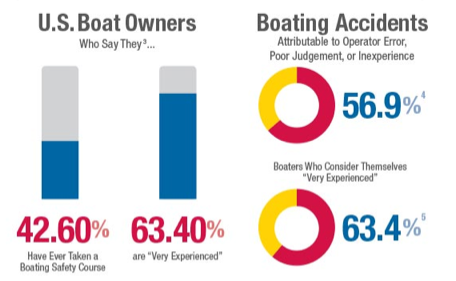Greenwich Police Lt. John Browne shares a review of laws and safety tips for tubing, water-skiing and boating.
Water-skiing within the Connecticut waters of the Long Island Sound includes the towing of any person behind a vessel under power including personal watercrafts such as water-skiing, tubing, wakeboarding, wakesurfing, etc.
Tubing Safety Tips
Tubing within the Long Island Sound is a great water sport. Here are some tips to keep it safe. Remember that tube riders do not have the directional control that water-skiers have.
• Water-skiing is forbidden between ½ hour after sunset until sunrise or when visibility is restricted to less than 100 yards.
• Riders are required to wear a USCG approved life jacket at all times, regardless of age.
• Follow manufactures recommendations regarding capacity, weight restrictions, number of riders, age limits and maximum towing speeds.
• Securely fasten the line. Use heavy duty line designed for towing tubes. Check its condition often.
• Turn off the engine and count to 10 before allowing a person into the water. Remember the propeller continues to spin when the engine is off.
• Learn to balance the weight on the tube. Properly position tubers based on tubes characteristics.
• Ensure a responsible spotter of at least 12 years of age. Make sure the tuber and the spotter understand and communicate hand signals. Always listen to the tuber. Use the spotter! The operator of the vessel should not be watching the tuber.
• Know the area you will be tubing in ahead of time. Maintain a safe distance between the tube, other boaters, piers, docks, etc.
• Use caution when making turns. Tube speed increases during a turn. Riders can fall off or be thrown. Never have the tuber on the inside of a turn. Plan ahead of the turn to make sure the tube will have enough room to pass safely.
• Slow the boat when needed. Especially when crossing wakes to avoid back and other injuries.
• Approach a rider in the water with caution. Always approach on the operator’s side of the vessel into the wind/current. Then turn the engine off.
• Never back up to a person or allow them to use the propeller to re-enter the vessel.
• Make sure the vessel operator, spotter and tubers are alert and sober at all times.
• Securely stow all gear and tube. Never coil the line for the tube while the boat is in gear and the tube is in the water as it may become tangled in the propeller and cause injury.


General Safe Boating Checklist:
* Prior to starting any boat voyage ensure you have completed the following checklist:
* At least one life jacket for every person onboard and assign each person that life jacket which is fitted to them prior to leaving the dock!
* Approved USCG Safety Equipment based on length and type of vessel.
* Approved fuel tanks.
* Fully charged battery
* Operational lights and horn
* All gear stowed properly
* Knowledge of the weather and water conditions
* Make sure vessel registration is current
* Have a Safe Boating Certificate on the vessel at all times while operating.
* Know your location at all times, and have a well-stocked first aid kit onboard
* Review location of all safety equipment with all passengers onboard

US Coast Guard boating safety website, uscgboating.org
Two very helpful websites to understand some best practices and the law as it apply to boating safety are:
Boating Safety Resource Center

Email news tips to Greenwich Free Press editor [email protected]
Like us on Facebook
Twitter @GWCHFreePress
Subscribe to the daily Greenwich Free Press newsletter.